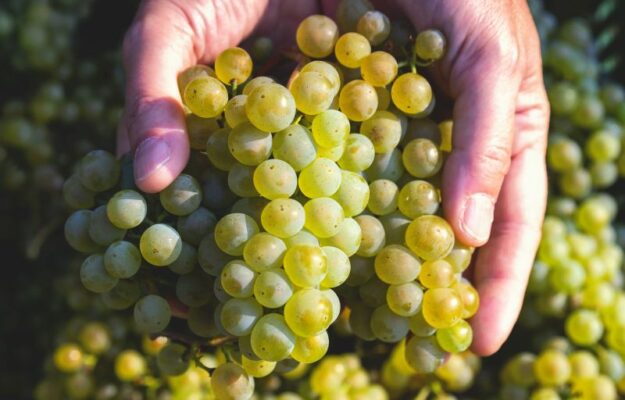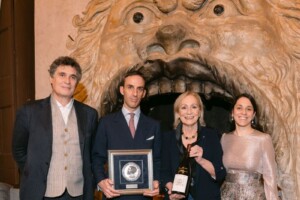Drought was the last of the numerous plagues to hit Italian vineyards after downy mildew and hail, but the toll of an August that reached record temperatures is not dramatic. The rains that fell in the last days of the month have actually restored the balance between the rows, with harvesting already underway in many regions and sparkling wine production territories nearing completion. In terms of expected yields, the picture today is similar to that of the end of July forecasts (here is the WineNews article), with cautious optimism in more than one territory.
However, the timing is somewhat diluted, with a harvest that is expected to be delayed by a couple of weeks compared to 2022 and to last a few days longer than usual. Quality appears to be guaranteed everywhere, but the Peronospora attacks have had significant consequences, particularly in Abruzzo, Sicily (where the drought has exacerbated the overall situation), and Tuscany. Precisely from here, from the reference region of Sangiovese, and cradle of some of the most important productions of Italy, WineNews’ reconnaissance begins a few days after the harvest. Starting again from Peronospora and the damage it caused between the rows, as the Confagricoltura Toscana estimated a crop loss of between 10% and 20%, and the Region’s Agriculture Councilor, Stefania Saccardi, underlined the insufficiency of the funds allocated so far by the Government: 1 million euros.
The Tuscan picture is more complex and articulated than one might imagine, with “the 2023 harvest recording an average drop in production of 20%, with different values from territory to territory” in its largest denomination, Chianti, says Giovanni Busi, president of the Chianti Wine Consortium. “We have started harvesting the white grapes and, from next week, we will begin the harvest of the red grapes. Currently, we are recording companies that have had a good harvest, thanks to the prompt treatments carried out against Peronospora, a fungus that attacks the bunch and causes it to dry out, and others that are instead suffering from a drop in quantity. There are some companies that report production losses of nearly 40%. However, there are no problems in terms of quality; the quality remains the traditional Chianti one”, concludes Giovanni Busi.
According to Giovanni Manetti, president of the Chianti Classico Consortium, the situation has become increasingly complicated, and “never before this year has it been difficult, if not impossible, to make precise estimates on the harvest. We maintain our forecast of a quantitative decline of 10% to 20% in 2022, but we won’t know for sure until harvest begins. There has been no rain in Chianti Classico in recent weeks, but the grapes will have time to rehydrate between now and the start of harvesting. The situation in the area is very uneven; some areas, companies, and individual vineyards have suffered significantly more than others. The various vegetation management practises have had an effect: vineyards with shoots still lowered to cover the bunches, for example, have suffered more”, underlines Manetti.
The Consortium of Brunello di Montalcino remained tight-lipped, awaiting the results of the latest checks and the latest findings between the vines, where at the end of July, perhaps with an excess of optimism, the President of the Consortium, Fabrizio Bindocci, spoke to WineNews about production drops of around 5%.
Difficult calculations and forecasts are also present in Maremma, as explained by Francesco Mazzei, president of the Maremma Toscana Consortium. “It is difficult, and certainly premature, to estimate production; never before in this harvest is caution required, given the dissimilarity of situations that exist in a vast territory like the Maremma, where the incidence of spring rainfall and plant diseases did not have the same effects everywhere. In most cases, I can confirm that the winemakers have carefully managed the vineyard's phytosanitary state by intervening at the appropriate time. We can expect a 10-15% drop, but the grape quality appears to be excellent”. From a qualitative point of view, in fact, given the thermal difference that occurred between the end of July and the first days of August and the substantially changed thermal picture in recent days - with a substantial drop in temperatures (even the minimum ones) which is expected to continue until the first ten days of September - one can only be optimistic. The thermal difference and the good weather conditions of the next few days will favour an optimal level of ripening of the grapes, which will benefit both the white ones, particularly Vermentino and Ansonica, and the red grapes, for which the harvesting times will continue until the end the month of September, and in some areas, it will last until October.
Understandably, Albiera Antinori, at the helm of the Bolgheri and Bolgheri Sassicaia Consortium, advises caution, deferring “the definitive data until the end of the collection” while emphasising that the situation in Bolgheri is “definitely good, and the decline in production, in the end, could be lower than estimates from a few weeks ago”. It is impossible to provide an exhaustive picture, even within individual denominations, but the impression is that the situation in Bolgheri is not only better than in other territories but also better than we anticipated a month ago. With the rains at the end of August, we have enough water reserves, and the grapes have benefited as well, which are very beautiful, but caution and patience are still required, as the harvest is just getting started, with the whites and some Merlot destined for the production of rosés. The feelings are positive, and fingers are crossed for what could be a really good harvest, albeit slower than usual”.
From Tuscany we then go up the peninsula, to arrive at another reference area for Italian viticulture, that of the Langhe, where “a fantastic harvest is expected, in terms of quantity and quality”, begins Matteo Ascheri, president of the Barolo and Barbaresco Consortium. “Despite the heat of August, the 70 millimetres of rain that fell at the end of the month restored balance to the vineyard. There’s no rush because the grapes aren’t ready yet, but they are healthy and beautiful, and we’re also calm on the quantity front, at least in the Barolo area. In Roero, on the other hand, hail caused some damage and drought hit the hardest, while in Barbaresco, where there is no hail, the situation is excellent. Monferrato is of some concern, where the sandy soils have not helped. The grapes we have already harvested and vinified show the prerequisites for a less extreme harvest than we anticipated, and our first impressions, while it is still too early to make forecasts, are that we are dealing with a productive harvest that has not been harmed by Peronospora, in line with 2021”, concludes Ascheri.
Then there are those in the final stages, such as Franciacorta producers, who can now not only breathe a sigh of relief but also look at their cellars with satisfaction. “The week of August brought very high temperatures, but fortunately in the following days the situation returned to normal”, says Silvano Brescianini, president of the Franciacorta Consortium. “We haven’t had any drought issues, and we haven’t had to deal with hailstorms or other problems like other areas. Franciacorta can be happy because we are nearing the end of a very good harvest, marked by balance, healthy grapes, and good acidity, which is also excellent quantitatively, especially after some unusual years. I believe that the Franciacorta producers would agree to always have vintages like this 2023”, comments Brescianini.
The situation is different in Prosecco, Italy's largest sparkling wine region, where “the Glera harvest is coming to life”, according to Luca Giavi, director of the Prosecco Consortium. “The rains at the end of August helped us in one way, as I recall the regression of Flavescence dorée, and previously Peronospora had not caused significant damage. The hail at the end of July, on the other hand, left remnants, but only at the level of individual companies and only in a few municipalities between Veneto and Friuli Venezia Giulia: we’re talking about 180 hectares of vineyards with losses of around 16%. As a denomination, we can count on the improved cutting and on an area of Glera, in the 9 provinces, which we can draw on if necessary (this is 3,500 hectares, for a maximum area exceeding 2.5 hectares per company, ed.), guaranteeing thus a production level in line with the last few years. Obviously, it is difficult to predict until the grapes are in the cellar, but I am confident that in the end 2023 will be a good vintage”.
Remaining in Veneto, in Valpolicella the forecast of the president of the Consortium, Christian Marchesini, is “a 5% drop in 2022 due to the combined effect of downy mildew and climate trends, with few hail problems and some concern due to the incidence of Esca disease, the phytopathological problem that is causing the most difficulties for us. We were concerned until a few days ago, but now that the climate has changed, we are back to being optimistic. The maturation prospects are good, a few days behind the ten-year average and a couple of weeks behind 2022. We must keep in mind that we make a very strict selection for the production of Amarone, and the drought in August was a godsend in this sense because it dried the grapes, which were even too swollen after the rains of May, June, and July”.
Descending the Adriatic coast, we arrive in Abruzzo, which is experiencing a harvest season of lights and shadows, according to the balance sheet of the Consortium Vini d'Abruzzo, which is dealing with the effects of this year’s climate changes. The first grape varieties were harvested a few days ago in the Region, which will be remembered for the high incidence of Peronospora, which primarily affected the inflorescence, and drought, with an estimated loss of 45-50%. “Companies have worked consistently and precisely throughout the season to prevent downy mildew, but despite this, a preliminary estimate on early grapes harvested in recent weeks shows that more than 45% of the production has been damaged”, explains the president of the Technical Committee of the Consortium Vini d’Abruzzo, Nicola Dragani, who however reassures on the quality level of the harvest. “In some areas, pedoclimatic conditions and altitudes have resulted in a lower incidence of the pathogen, which, when combined with effective vineyard work, has allowed vine losses to be limited”.
Finally, the Region that, first and foremost, faced the 2023 harvest, and which, more than any other, had to deal with the complexities of an extreme seasonal trend, resulting in a poor, but still high-quality harvest. Here, the very cold spring pushed back the start of harvest by about ten days, and the president of the Sicilian DOC Consortium, Antonio Rallo, confirms earlier forecasts of “a drop in yields of 40% to 50% compared to 2022”. Aside from Peronospora, another issue for us was the extreme heat of July, which resulted in much smaller and lighter berries than usual. They are, however, turgid and perfect, with exceptional aromatic concentrations, as well as wonderful colours and fantastic tannins on red grapes. Even though the quantities are relatively small, we are very pleased with the quality”.
Copyright © 2000/2025
Contatti: info@winenews.it
Seguici anche su Twitter: @WineNewsIt
Seguici anche su Facebook: @winenewsit
Questo articolo è tratto dall'archivio di WineNews - Tutti i diritti riservati - Copyright © 2000/2025


























































































































































































